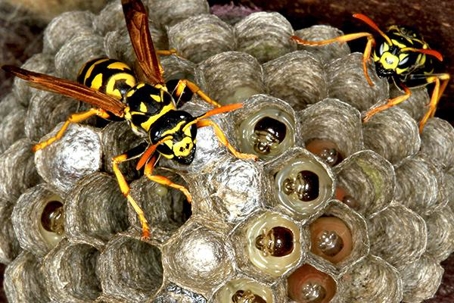Along with the sunshine and warm weather, summer brings bees, wasps, and other flying pests. If your home has seen a sudden spike in the number of winged creatures, evaluating the pest problem is a necessary first step in making sure that you, your family, and your property stay safe.
Before you start spraying store-bought insect control products, stop and learn why a DIY pest removal strategy is not for you. Unless you have professional-level experience and expertise, attempting to rid your home or your home's exterior area or yard of bees, hornets, or wasps is never advisable. These pests aren't just annoying - they also present serious risks to your health. What do you need to know about bees and wasps? Look at some of the top questions that homeowners have about this buzzing problem.
What Is the Difference Between a Bee and a Wasp?
Identifying your stinging insect problem is necessary if you want to correctly eradicate the issue. Even though the stinging insect may have yellow and black stripes, you shouldn't assume that it's a bee. Many wasps are a variation of black and yellow. Wasps are typically much more aggressive than bees, making them a greater danger to your safety. While this doesn't mean you should ever approach or handle a bee's nest, wasps may pose a greater risk and should be avoided, if possible.
Bees are pollen collectors, while wasps are hunters. This results in several structural differences between the two. As collectors, bees have hairier bodies that they use to hold nectar and pollen. Adult wasps also feed on nectar, but they must also hunt other insects to feed their young. These hunters have long, smooth bodies that are better suited to finding food. Both bees and wasps can sting. Honeybees only can sting you once, while other types of bees (carpenter bees and bumble bees) as well as wasps can sting multiple times without their stinger getting caught in their victim's skin. This makes them a much bigger threat to you and your family.
What Does a Nest Look Like?
You should expect to see a few buzzing bees or wasps in the summer months, especially if you have a garden. They feed on your flowers and aren't likely to bother you. You may even see one or two in your home. A stray bee or wasp that gets in when the front door is open or after you've opened a window isn't typically a problem.
If you see more than a few bees or wasps in or around your home, then you may have a nest somewhere on your property. Identifying the nest alerts you that you have a problem and allows you to address the problem. Bee and wasp nests vary in size, consistency, and shape. Paper wasps build umbrella-shaped nests, yellow jackets often nest in the ground, and beehives have a waxy nest that may be inside of a tree. Some species of wasps also make round or oval paper-like nests.
Bees tend to swarm outside of their nests, while wasps typically won't. Even though you may see only a few wasps around the nest, there may be hundreds more inside.
Are You Safe to Approach a Nest?
The short answer to this question is no. Again, wasps may not swarm around their nests. This may give you a false sense of comfort. Never assume that the few wasps you see outside of their home are the colony. Approaching a nest can put the wasps on high alert, agitating them to the point of aggression.
If you suspect that you have a bee or wasp nest, call a Commercial pest control professional immediately. Stay far away from the nest and wait for the expert to remove the danger from your home or yard. Do you have a bee or wasp problem? Contact us at The Original Bugman Pest Elimination, Inc. of Columbia for more information on our bee and wasp control services!
Schedule Your Free Inspection
Complete the form below to schedule your no-obligation inspection.

